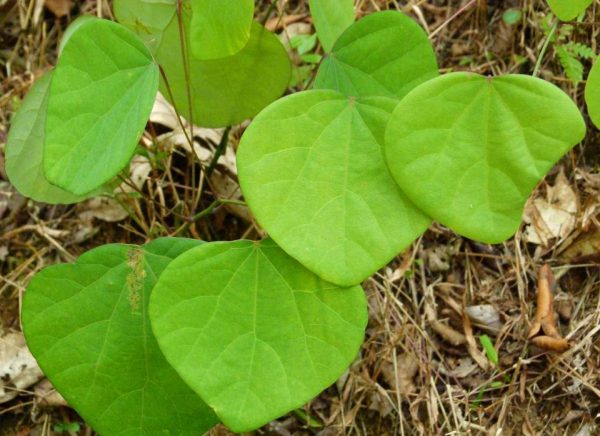Bala (Sida cordifolia): The Powerful Herb for Strength and Vitality
Basonym of Drug: The medicinal herb known as Bala is scientifically referred to as Sida cordifolia.
Main Synonyms: In Ayurveda, Bala is known by various synonyms, including:
- Mahabala
- Atibala
- Shvetabala
- Balya
- Mahashakti
Regional Name: Bala is also known by different names in various regional languages. Some common regional names include:
- Hindi: Bala
- Bengali: Bala
- Kannada: Nelatutti
- Malayalam: Venkuntirama
- Marathi: Bala
- Tamil: Palaikkodi
- Telugu: Tellamaddi
Botanical Name: The botanical name of Bala is Sida cordifolia.
Family: Bala belongs to the Malvaceae family.
Classification of Dravya (Gana) as described in Charak and Sushrut: In the classical Ayurvedic texts of Charak and Sushrut, Bala is classified as follows:
- Charak: Bala is categorized under the group of “Balya,” which means it belongs to the group of herbs that promote strength and vitality.
- Sushrut: In Sushrut Samhita, Bala is classified as a “Vayasthapana,” indicating its ability to restore youthfulness and vitality.
External Morphology: Bala is a small, perennial, herbaceous plant with heart-shaped leaves and pale yellow flowers. The plant has a woody base and is covered with fine hairs.
Useful Parts: The useful parts of Bala are primarily the roots, leaves, and seeds.
Important Phytoconstituents: Bala contains various bioactive compounds, including alkaloids, flavonoids, and essential oils, which contribute to its medicinal properties.
Rasa Panchaka: The Rasa Panchaka (five tastes) of Bala is as follows:
- Rasa (Taste): Sweet (Madhura), Bitter (Tikta)
- Guna (Quality): Heavy (Guru), Unctuous (Snigdha)
- Virya (Potency): Hot (Ushna)
- Vipaka (Post-digestive taste): Sweet (Madhura)
Action on Dosha, Dhatu, and Mala: Bala primarily pacifies the Vata dosha. It acts on the Mamsa (muscle) and Asthi (bone) dhatus and has an effect on the Mutra (urine).
Prayogarha Vyadhi (Therapeutic Indications): Bala is utilized in Ayurvedic medicine for various therapeutic purposes, including:
-
Muscle Strength: Bala is well-known for its ability to enhance muscle strength and stamina. It is commonly used to improve physical performance and athletic endurance.
-
Joint Health: It is beneficial for joint health and may help in managing joint pain and stiffness.
-
Nervous System: Bala supports the nervous system and aids in managing conditions like neuropathy and sciatica.
-
Respiratory Health: It is used to manage respiratory conditions like cough and asthma.
-
Reproductive Health: Bala is considered an aphrodisiac and may help in managing sexual debility and fertility issues.
Amayikaprayoga and Matra (Therapeutic Administration and Dose): Bala is commonly administered in various forms, including powder, decoction, and medicated oils. The dosage depends on the specific condition and the individual’s constitution. Commonly used forms and doses include:
- Powder: 3-6 grams, once or twice a day
- Decoction: 50-100 ml, once or twice a day
- Medicated Oils: As prescribed by an Ayurvedic practitioner
Vishishta Yoga (Names of Important Formulations): Bala is an integral ingredient in various Ayurvedic formulations used for promoting strength and vitality. A few formulations are mentioned as below –
-
Balarishta: Balarishta is an Ayurvedic fermented herbal tonic that includes Bala as a key ingredient. It is commonly used to promote strength, improve physical endurance, and support the nervous system.
-
Bala Taila (Bala Oil): Bala Taila is an herbal oil prepared with Bala as the main ingredient. It is used for massage to relieve muscle and joint pain, improve muscle strength, and provide nourishment to the muscles and bones.
-
Brihat Balarishta: Similar to Balarishta, Brihat Balarishta is a potent tonic containing Bala and other herbal ingredients. It is beneficial for promoting overall vitality and vigor.
-
Bala Churna: Bala Churna is a powdered herbal formulation prepared with Bala root. It is used to enhance physical strength, manage joint pain, and support the musculoskeletal system.
-
Bala Guda (Bala Linctus): Bala Guda is a herbal linctus made with Bala and other herbs. It is used for respiratory conditions like cough and asthma, and it helps soothe the respiratory passages.
-
Bala Kwath (Bala Decoction): Bala Kwath is a decoction prepared with Bala and other herbs. It is commonly used to boost energy levels, manage joint discomfort, and support the nervous system.
-
Mahabala Taila: This herbal oil contains Bala along with other potent herbs. It is used externally for massage to relieve pain, improve muscle strength, and promote overall well-being.
-
Bala Ashwagandhadi Kwath: Bala Ashwagandhadi Kwath is a herbal decoction that includes Bala and Ashwagandha. It is used to enhance vitality, manage stress, and support the immune system.
-
Bala Shatavari Kalpa: Bala Shatavari Kalpa is a herbal powder containing Bala and Shatavari. It is used to support women’s health, promote strength, and manage reproductive issues.
These formulations illustrate the versatility of Bala and its various therapeutic applications. Bala is a valuable herb in Ayurveda, and its inclusion in these formulations enhances their effectiveness in promoting overall health and well-being.
Vishakta Lakshan (Adverse Effects): Bala is generally safe when used in prescribed doses. However, it is advisable to consult an Ayurvedic practitioner before using it during pregnancy and lactation.
Chikitsopachara (Remedial Measures): Bala should be used under the guidance of a qualified Ayurvedic practitioner. Proper dosing and considering an individual’s specific health conditions are essential aspects of its therapeutic application.
Shodhana (If Required): Bala does not typically require shodhana (purification) procedures.
Bala, the powerhouse of strength and vitality, holds a special place in Ayurveda for its ability to promote physical endurance and overall well-being. Its rejuvenating properties make it a valuable herb for supporting various aspects of health.
Please let us know for any correction or wrong information: We strive to provide accurate and informative content. If you find any inaccuracies or have any suggestions to enhance the article, kindly share your feedback. Your valuable input helps us improve and deliver content that aligns with the needs of our readers. Thank you for your support!



